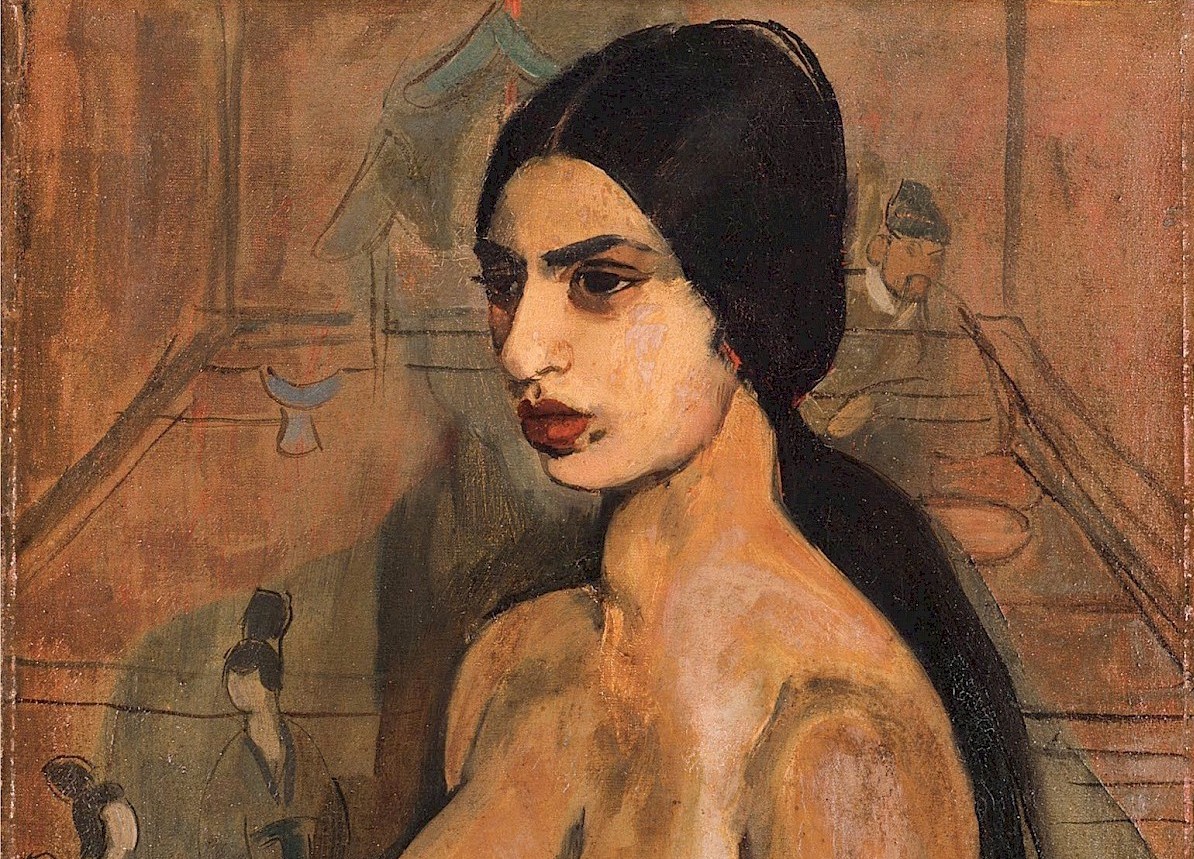Sher-Gil’s early paintings display a significant influence of the Western modes of painting, especially as practiced in the Bohemian circles of Paris in the early 1930s. Her 1932 oil painting, Young Girls, came as a breakthrough for her; the work won her accolades, including a gold medal and election as an Associate of the Grand Salon in Paris in 1933. She was the youngest ever member, and the only Asian to have received this recognition. Her work during this time include a number of self-portraits, as well as life in Paris, nude studies, still life studied, and portraits of friends and fellow students. The National Gallery of Modern Art in New Delhi describes her self-portraits she made while in Paris as “[capturing] the artist in her many moods – somber, pensive, and joyous – while revealing a narcissistic streak in her personality.”
When she was in Paris one of her professors often said that judging by the richness of her coloring that Sher-Gil was not in her element in the west, and that her artistic personality would find its true atmosphere in east. In 1933, Sher-Gil “began to be haunted by an intense longing to return to India [...] feeling in some strange way that there lay my destiny as a painter.” Sher-Gill returned to India at the end of 1934. In May 1935, Sher-Gil met the English journalist Malcolm Muggeridge, then working as Assistant Editor and leader writer for The Calcutta Statesman. Both Muggeridge and Sher-Gil stayed at the family home at Summer Hill, Shimla and a short intense affair took place during which she painted a casual portrait of her new lover, the painting now with the National Gallery of Modern Art in New Delhi. By September 1935 Amrita saw Muggeridge off as he traveled back to England for new employment. She left herself for travel in 1936 at the behest of an art collector and critic, Karl Khandalavala, who encouraged her to pursue her passion for discovering her Indian roots. In India, she began a quest for the rediscovery of the traditions of Indian art which was to continue till her death. She was greatly influenced by the Mughal and Pahari schools of painting and the cave paintings at Ajanta.
